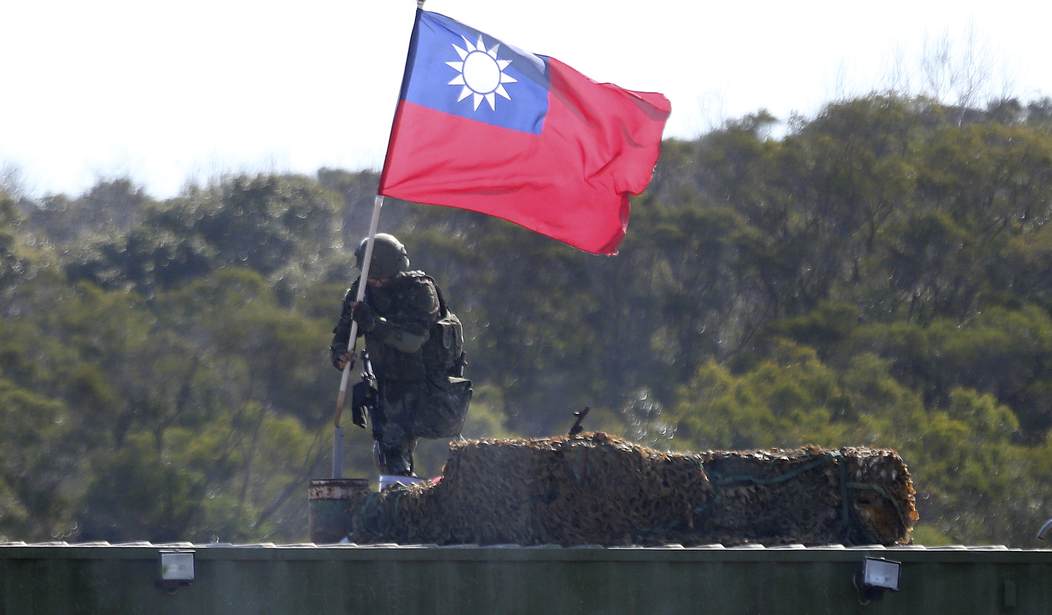On March 1, the U.S. tentatively approved the sale of $600 million in hi-tech weapons to Taiwan for its U.S.-made F-16 aircraft.
The weapons sale would impress anyone familiar with 21st-century air-to-air combat. Advanced Medium Range Air-to-Air Missiles. AGM-88B High Speed Anti-Radiation (HARM) missiles to destroy communist Chinese land-based radars guiding attacking Peoples Liberation Army Air Force (PLAAF) jets.
Attacking is that last sentence's critical word. On March 1, 19 PLAAF aircraft violated Taiwan's air defense identification zone (ADIZ). They were bluffing attacks.
Land radars would play key roles in a communist Chinese assault on the island. Taiwan's American-supplied HARM missiles would have to hit targets on mainland China.
The arc is clear. Beijing's military aircraft regularly and provocatively crosses the Taiwan Strait median line (the middle of the 110-mile wide strait). Communist China has become more belligerent and in the not-so-distant future will attack Taiwan and provoke a major war in the western Pacific.
Aircraft and missiles alone won't defeat a CCP invasion. Stopping Beijing will require a bitter ground battle against invading ground forces -- amphibious and airborne.
In January the Washington-based Center for Strategic and International Studies (CSIS) released a study titled "The First Battle of the Next War: Wargaming a Chinese Invasion of Taiwan."
Well-conducted war games are serious exercises in possible futures, with the goal of gleaning insights that help the gamers positively shape the future. I know something about high-level games. From 1989-1993, I was a special adviser in strategic wargaming in the U.S. Office of the Secretary of Defense.
The CSIS game is seriously flawed. My criticism is technical. The game is built around "3.5 day" turns -- each turn represents 84 hours. Study classic amphibious operations like Gallipoli and D-Day and you'll know the first three to four hours of the invasion are critical.
Recommended
However, the game's output has several points Taiwan, the U.S. and all U.S. allies must consider.
Page 119: The U.S. "cannot take too long deciding what to do in a crisis. The longer the U.S. delays entering the war, the more difficult the fight."
In the multiple iterations of the game (the players examined scenarios modeling different U.S. and allied reactions) U.S. bases in Japan and Guam suffered destruction. USAF bases in Japan are critical to combating China. The wargamers recommend the U.S. fortify and expand air base capacity in Japan and Guam.
Sound advice. Historical point: in the 1930s, the U.S. Army recommended fortifying Guam. Alas, with the Great Depression there was no money.
The study also recommends a "shift to smaller, more survivable ships."
In the games, the U.S. "lost many surface ships in almost every (game) iteration because of forward deployment within the Chinese defensive zone." America "typically totaled two carriers and 15 to 25 cruisers/destroyers... in the most intense iterations, the U.S. Navy was losing a major ship every day of the war."
In a column published in September 2022 I mentioned a small warship, the H96 attack boat, that combines speed and combat punch. It's cheap to build and can carry long-range missiles that can hit Chinese land targets (like radars). U.S. Navy capital ships aren't risked in early battles. (Full disclosure -- I wrote a proprietary study of the boat that included my own wargaming analysis.)
But here's the biggest deal for Taiwan: CSIS says Taiwan must adopt a "porcupine strategy" -- hardened defenses that degrade invading Beijing forces and buy time for allied reinforcements.
The island has elements of a porcupine defense. In 2002, I got a tour of Taiwanese bunkers on the west side and a look at an air base on the east coast whose hangars were in a mountain.
Taiwan's porcupine, however, needs more bristles -- trained personnel, modern weapons and reinforced bunkers.
























Join the conversation as a VIP Member